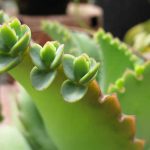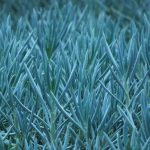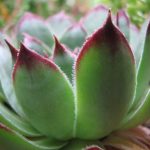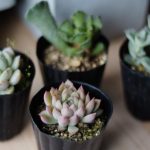Struggling with Lavender Scallops care? Look no further! This easy-to-maintain succulent is a favorite among beginner and expert gardeners. Discover valuable insights on nurturing your Kalanchoe Fedtschenkoi from gardening pro Melissa Strass.
Embrace the beauty of Kalanchoe Fedtschenkoi, also known as Lavender Scallops, in your garden. This low-maintenance succulent is a versatile addition, fitting seamlessly in any plant arrangement, indoor or outdoor.
Like all succulents, Lavender Scallops have specific growth requirements. To ensure their optimal development, certain conditions must be met.
Continue reading to dive into the world of Lavender Scallops and master their care regimen!
Kalanchoe Fedtschenkoi Plant Overview
|
Plant Type
Succulent
Season
Spring
Pests
Mealy Bug and Scale
Family
Crassulaceae
Exposure
Part Sun to Part Shade
Diseases
No Serious Vulnerabilities |
Genus
Kalanchoe
Plant Spacing
18”-24” |
Low maintenance: Lavender Scallops thrive in various conditions including well-draining, sandy soil. Planting depth can be at surface level, making care simple. The species is unique and adds a touch of elegance to any garden.
Native Area
Madagascar
Height
12”-24” tall
Plant with
Succulents, Palms, Cacti
Hardiness Zone
9-11
Watering Needs
Low
Attracts
Butterflies and Hummingbirds
About Lavender Scallops
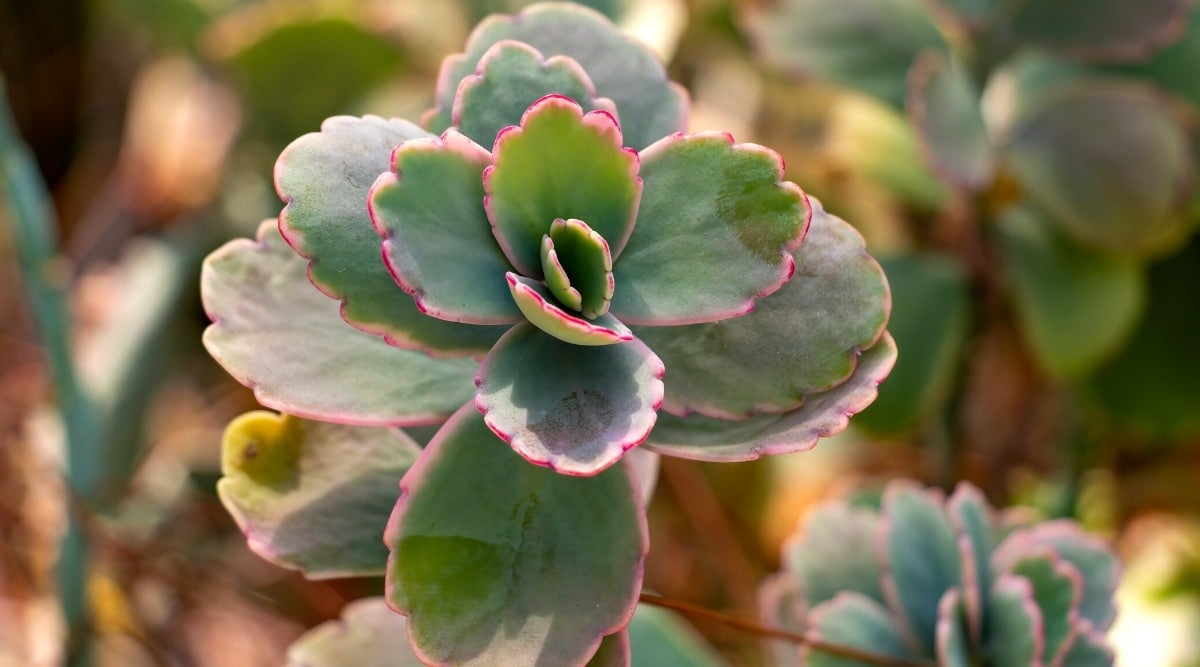

Kalanchoe Fedtschenkoi, commonly known as Lavender Scallops, belongs to the kalanchoe genus of succulent perennials. Originally native to Madagascar, this plant adds an elegant touch to any garden with its unique characteristics.Originating from the island of Madagascar, the kalanchoe plants have spread their roots and can now be spotted in gardens and households across the United States and beyond.
Named after the renowned Russian botanist Boris Fedtschenko, who dedicated his life to botanical studies, this species, although not directly linked to him other than by name, boasts colorful variegated foliage and remarkable hardiness, making it a popular choice for container planting.
Considered hardy in zones 9-11, the Fedtschenkoi species thrives as a houseplant outside of its designated zones, requiring minimal water and moderate sunlight.
Belonging to the Kalanchoe genus, formerly known as Bryophyllum Fedtschenkoi, this species is part of a vast family of over 250 flowering succulents known for their vibrant blooms that last long.
A monocarpic species, K. Fedtschenkoi blooms once in its lifetime before the mother plant fades away, giving way to new offsets to take its place. Known for its attractive foliage, the Lavender Scallops plant comes in variegated and non-variegated varieties.
Boasting fleshy leaves with scalloped edges, the plants develop striking blue-green leaves with purple edges that turn pinkish-purple when exposed to ample sunlight, creating a colorful spectacle in any collection.
Requiring several years to bloom and set seeds, these plants exhibit bell-shaped reddish-brown flowers hanging delicately in clusters, attracting butterflies and hummingbirds with their sweet nectar. Propagating kalanchoe plants is a straightforward task owing to their resilient nature; however, manual intervention can aid in expediting the process.
One method is propagating through cuttings, which involves taking a portion of the plant and encouraging it to root independently, ensuring a steady supply of these charming succulents for any garden or indoor space.
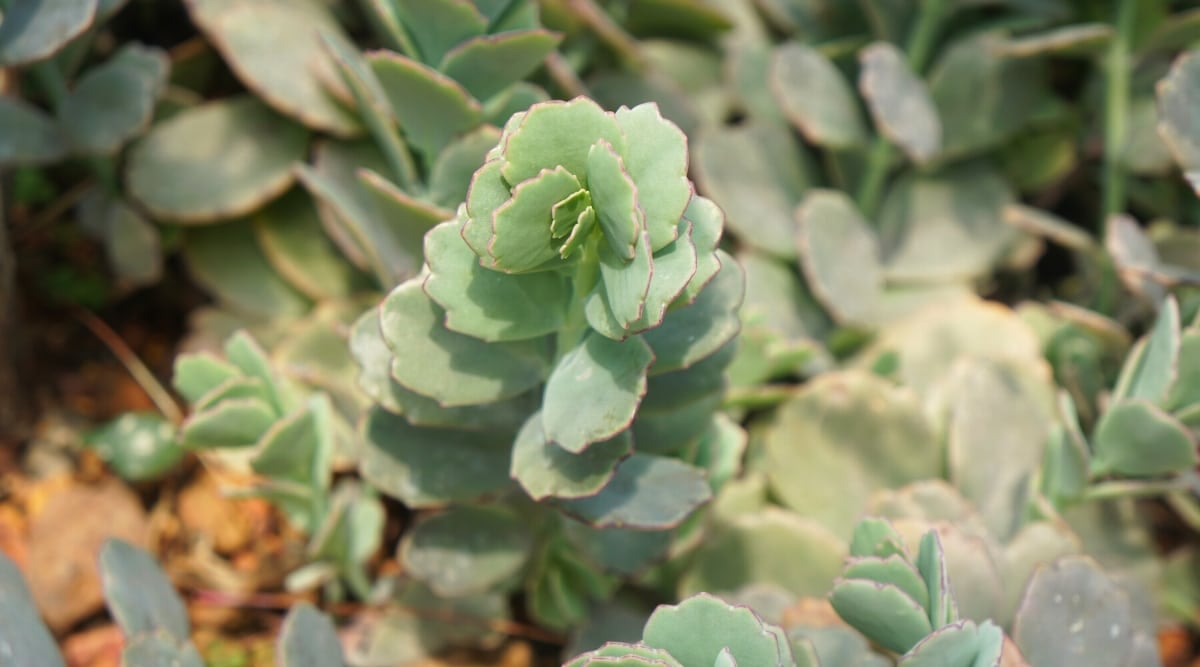
Opting for cuttings is the most effective method to propagate plants. This process, also known as division, entails cleanly cutting a leaf or leaves from the parent plant. It is crucial to use a sharp, clean blade to make diagonal cuts on the stem to provide ample surface area for the growth of new roots.
Allow the cuttings to dry under sunlight or in open air until the edges have completely dried. While using rooting hormone isn’t compulsory, it might accelerate the process slightly. Skipping the rooting hormone will result in a plant that is less reliant on external factors and more adept at sending out roots and adapting to its new environment.
When potting your cuttings, utilize small pots and cactus planting mix. Adding sand to the potting medium enhances permeability and improves drainage. Create a shallow hole in the medium, insert the cutting’s stem into it, gently secure it, and place it in a location with bright, indirect light. Remember to moisten the soil when it dries out – you should notice your cutting starting to root within a few weeks.
Seeds
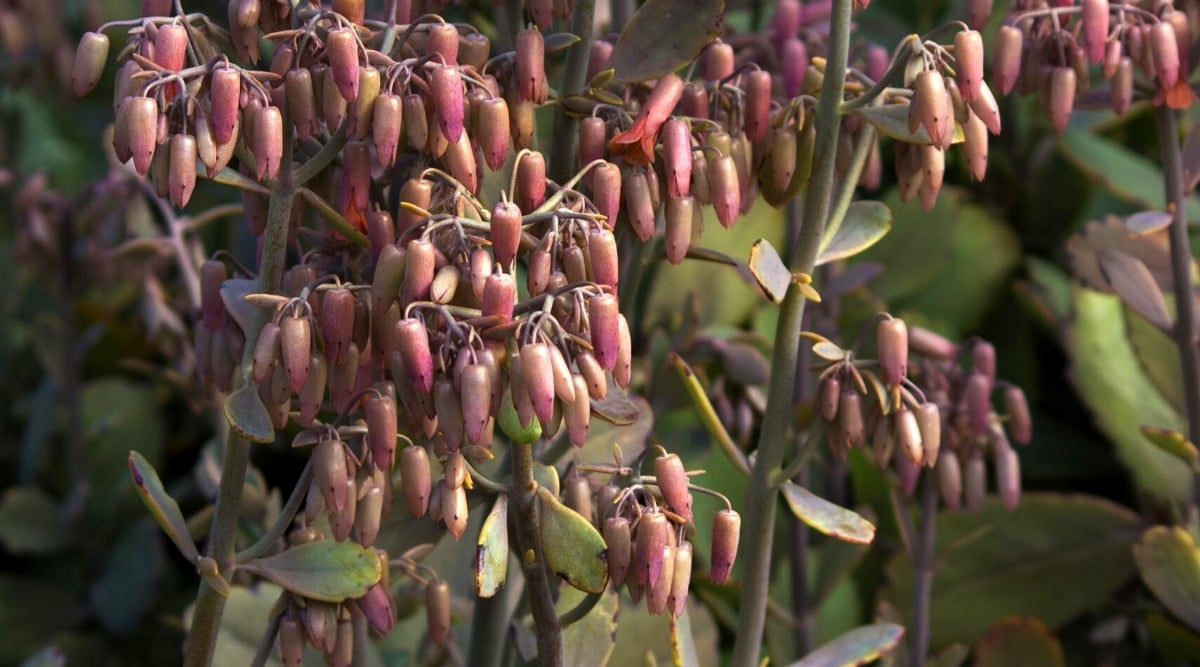
If time is not an issue, propagating from seeds is a viable option. However, this method requires waiting for the plant to flower to harvest seeds, resulting in a period without plants until the seeds sprout. In contrast, cuttings allow for the growth of new plants while the parent plant withers post-flowering.
Once the flowers fade, seed pods are left behind. Wait for the seed pods to dry and turn brown before collecting the seeds. As Kalanchoe seeds are tiny, scissors and small forceps or tweezers will be necessary for collection.
After drying a flower and separating the petals, lay the green seed pod on a paper towel to dry for about a week. When the pod is dried, you can puncture it with your thumbnail to reveal the seeds inside. Extract the seeds using forceps or tweezers and store them in a paper towel or envelope for future use.
If you opt to grow from plantlets or seeds, planting Lavender Scallops involves simple steps. Just place them on the soil surface, keep the moisture consistent until they establish roots, then water only when the soil dries out.
For mature Kalanchoe plants, choose a pot that fits their size, ensuring ample air circulation around the roots. Fill the hole with loose potting mix, at the same depth as the roots, for optimum growth.
When potting your Lavender Scallops, select a pot size based on the plant’s mature size. Whether it’s a small plantlet or a mature plant, opt for a pot not excessively larger than the plant to promote healthy growth.
Ensure proper drainage for your potted plant as Kalanchoe roots dislike excess moisture. Terracotta pots aid in water drainage, and adding stones at the bottom further enhances this. This prevents waterlogging, vital for the well-being of your plant.
Light
Lavender Scallops thrive in bright, indirect sunlight, with the light intensity affecting leaf coloration. To maintain the blue-green hue or white variegation, offer plenty of indirect sunlight throughout the day.
Experimenting with light exposure can alter leaf color but monitor any stress-induced color changes carefully to prevent leaf damage. Gradually increase sunlight exposure to intensify leaf color for desired aesthetics.
Notably, variegated varieties require more sunlight due to their altered chlorophyll production, crucial for photosynthesis compared to non-variegated types.
Water
Being succulents, Kalanchoe plants prefer infrequent watering. Adjust the watering frequency based on the plant’s location and container type for optimal plant health.
Indoor potted plants in succulent mix need watering every one to two weeks in summer, reducing to once every three weeks in cooler seasons. Outdoor plants require more frequent watering due to faster evaporation.
Monitor watering to prevent root rot, especially during periods of decreased water absorption, common in succulents.
Soil
Plant Kalanchoe in well-draining cactus potting soil or a custom mix with loose particles to prevent water retention. For a DIY mix, combine regular potting soil with coarse sand and perlite for adequate drainage.
A layer of stones at the pot’s base aids in drainage, ensuring the soil doesn’t become waterlogged, which is detrimental to Kalanchoe growth.
Climate and Temperature

For regions in zones 9-11, Lavender Scallops, a kalanchoe species, thrives outdoors but cannot endure prolonged cold below 40°F. The plant prospers best within the temperature range of 64° to 68°F, which mirrors room temperatures. Below 61°F hinders growth and flowering.
Kalanchoe varieties, including Lavender Scallops, prefer drier climates over humid conditions to avoid potential rot issues. During colder spells below 50°F, transition potted kalanchoe indoors to ensure healthy growth and bud setting with adequate dark periods.
Fertilizing

Kalanchoe plants, like Lavender Scallops, require minimal fertilization effort, utilizing nutrients efficiently. When fertilizing, use a diluted balanced all-purpose fertilizer at half strength, applying 2-3 times annually during the growing season, excluding winter.
Pruning and Maintenance
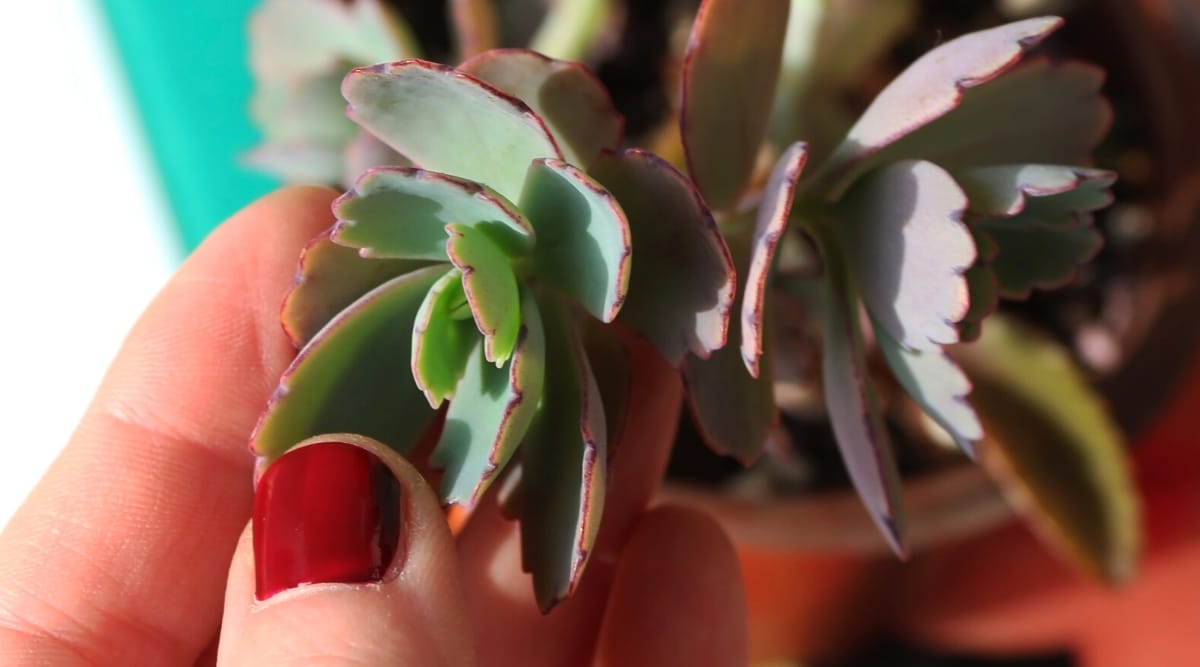
Lavender Scallops necessitate minimal care, primarily requiring water as needed and optional fertilization. Deadheading flowers is unnecessary, except for removing damaged leaves for aesthetics. In low-light conditions causing legginess, trim back the plant to stimulate new branch growth.
Popular Varieties
Two popular K. fedtschenkoi variants exist – standard and variegated, each with distinct characteristics.
Kalanchoe Fedtschenkoi
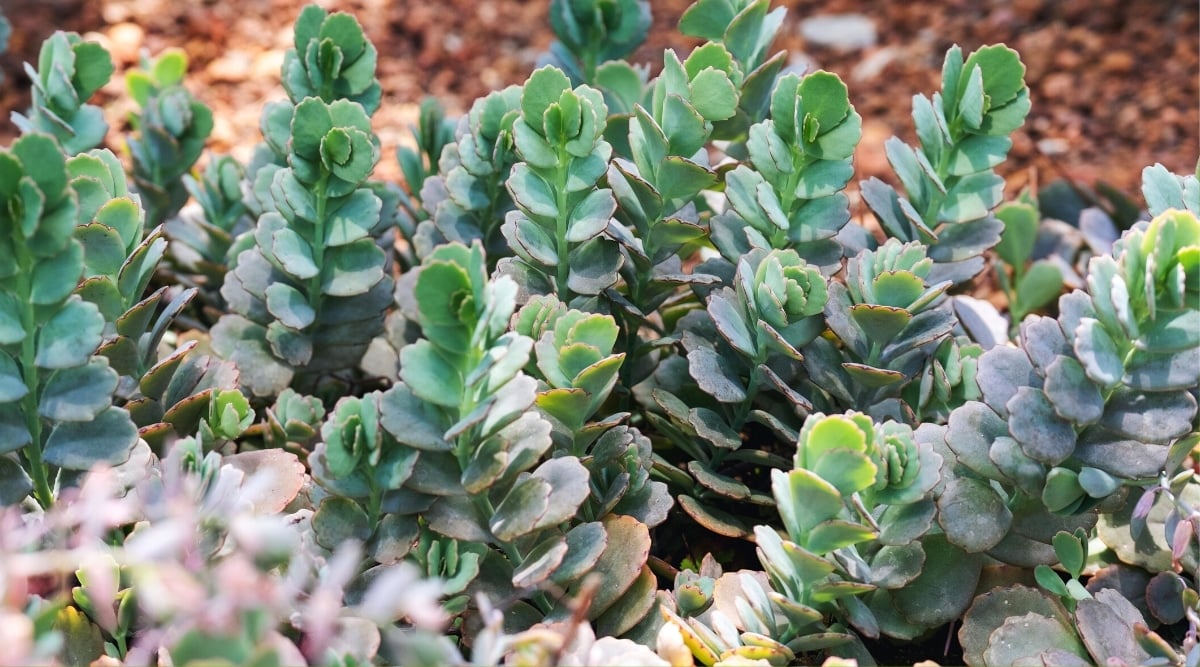
Scientific Name: Kalanchoe fedtschenkoi Raym. -Hamet & H. Perrier
- Blooms: Lorem ipsum dolor sit amet.
- Leaves: Nullam imperdiet fringilla tellus.
- Care: Etiam ultrices velit vel augue.
- Propagation: Nam quis nunc et libero malesuada lacinia.
- Time: Spring
- Geographical Location: Madagascar
- Sun Exposure: Bright Indirect Light
- Plant Zone: 9-11
This descriptive variety of K. fedtschenkoi showcases solid bluish-green leaves with scalloped edges and a potential reddish-purple hue when exposed to direct sunlight, a characteristic that captivates gardeners. Despite the color change, stress-induced discoloration is generally harmless.
Flowering occurs after a few years, typically in the spring, featuring short spikes bearing tubular coral-colored blooms. Post-flowering, the plant goes through a natural cycle of demise.
Kalanchoe Fedtschenkoi Variegata

Scientific Name: Kalanchoe fedtschenkoi f. variegata
- Bloom Time: Spring
- Geographical Location: Madagascar
- Sun Exposure: Bright Indirect Light
- Plant Zone: 9-11
The variegated genus of K. fedtschenkoi bears white blotches on its leaves, creating a multicolored appearance due to the absence of chlorophyll. To compensate, this variant requires additional sunlight. Additionally, exposure to direct sunlight also prompts stunning coloration, showcasing a rainbow effect.
Pests and Diseases
Lavender Scallops proves resilient against most pests and diseases, with minimal threats. While scales and mealy bugs occasionally appear, they can be managed effectively. Scales, common sap-feeding brown insects, are treatable using neem oil.
Scale
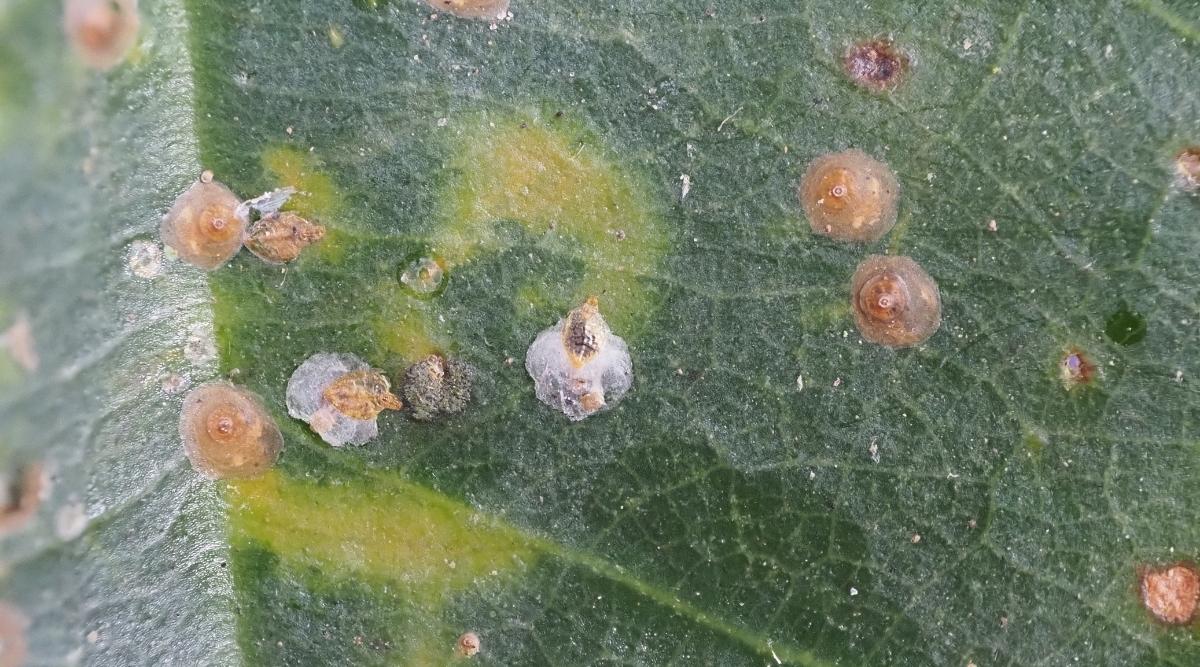
Mealy bugs, small sap-feeding insects, prefer warm climates and can be challenging to eliminate due to their sticky secretions. Prevention remains key to safeguarding plants against these pests.
Mealy Bugs

Facilitating a healthy environment reduces susceptibility to pests and diseases, ensuring the longevity of plants like Lavender Scallops.
Final Thoughts
Lavender Scallops, with its low maintenance nature and vibrant aesthetics, appeals to gardening enthusiasts seeking an engaging plant. Resilient against pests and diseases, this variety thrives indoors and outdoors, adding charm to any space with its striking colors and robust foliage.

